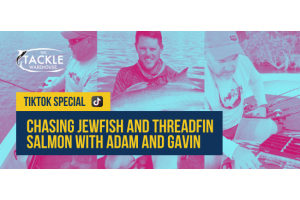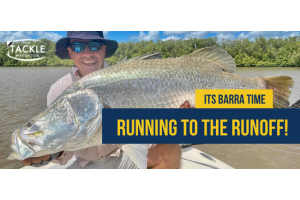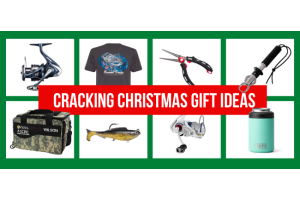With yet another successful Flathead Classic on the Gold Coast, we thought we would share some tips on how to target these great sports and table fish. The humble flathead is one of Australia’s favourite sportfish and their willingness to aggressively attack a number of different baits and lure styles makes them a great target in our local estuaries, bays and beaches.
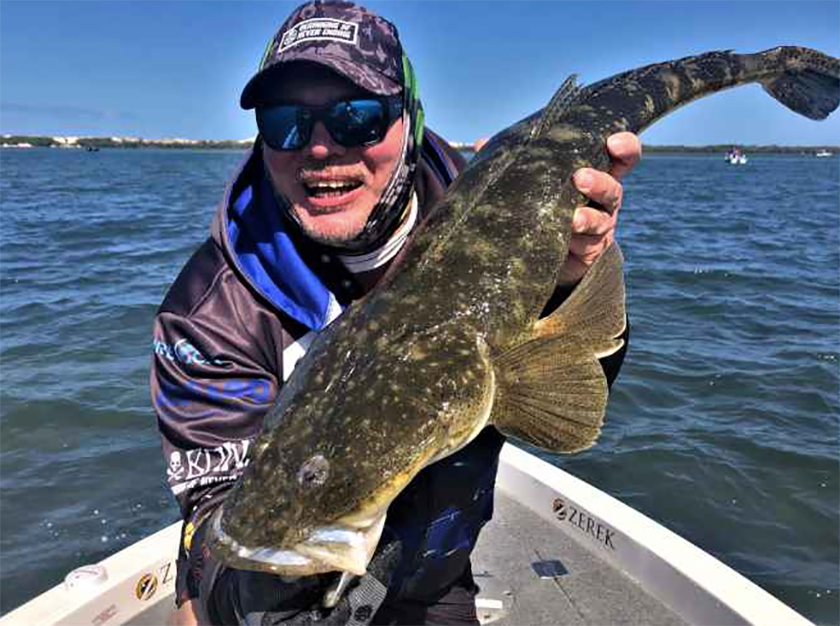
Where can I find them?
Flathead can be found along the entire coastline of Australia, with the two most dominant species being the dusky and sand flathead. The key to finding flathead is to understand how they typically feed. Flathead are a brilliantly camouflaged fish that use the sandy bottom of creeks, rivers, bays and beaches to hide and wait for their prey. Flathead will use the deeper water on the edges of sandflats, rocky drop offs and rock walls to set up shop and wait for falling water levels to flush fleeing baitfish, prawns and crabs straight past them for an easy meal.
For this reason, falling tide is often a great time to search for flathead in your favourite systems. It also makes it easier to identify likely holding spots for resident flathead. One great way to find new flathead locations, is to research your spots at dead low tide. You can spot where the drains run down from the flats, look for broken ground and sea grass that wiley flathead might use as cover while waiting for a feed of prawns, mullet or other baitfish.
If you are really lucky (and observant) you might actually be able to see where flathead have been laying in the sand on the previous high tide. Flathead have a very specific shape and if you spot a few depressions in the sand, you know that you are in the right spot!
When should I target flathead?
Flathead can be targeted all year round but there are a few things to take into consideration around tide and seasonal factors. Flathead are opportunistic feeders and as such, runout tide is the perfect time to target them as they lie in wait in deeper water for fleeing baitfish and prawns to be funnelled past them. Paying close attention to where the receding tide is emptying out and forming gutters and deeper channels on the edge of sandbars, mudflats and shallow reefs will give you the perfect starting point to search for these aggressive predators.
As with any kind of fishing, paying attention to the baitfish in the area you are fishing is also key. If you notice an abundance of small prawns skipping around the mangroves or creek edges when you are chasing flathead, then using fresh prawn baits or lures that imitate a fleeing prawn, will be hard for a flathead to resist.
Likewise, if your flathead session coincides with a run of small baitfish like mullet, hardyheads or herring, then you can bet your bottom dollar that this is what the local flathead population is going to be dialled in to. Often these bait runs are tied closely to seasonal changes (e.g. summer prawn runs) so you can start to predict the best bait or lures to use based on the time of year you are fishing.
What gear do I need?
One of the best things about targeting flathead is that you don’t need anything more than a light spinning outfit and a handful of hooks, sinkers and lures to target these fish effectively. A light 6’9”/7’0” spinning rod in the 4-8lb/6-12lb range is perfect. If you plan on throwing larger baits or lures around, then run with the heavier set up.
Reels in the 2500 size class spooled with 6-10lb braid should be perfect for both casting those lighter baits around like prawns and crab imitations, but will also give you ample stopping and lifting power when you hook up to a good fish. When it comes to leader material, good fluorocarbon leader is a must!
Flathead have a cluster of very sharp teeth in the middle top part of their mouth as well as smaller teeth along the bottom part of their jaw. Fluorocarbon leader has great abrasion resistance and good quality 10-12lb leader is a perfect line class for most flathead.
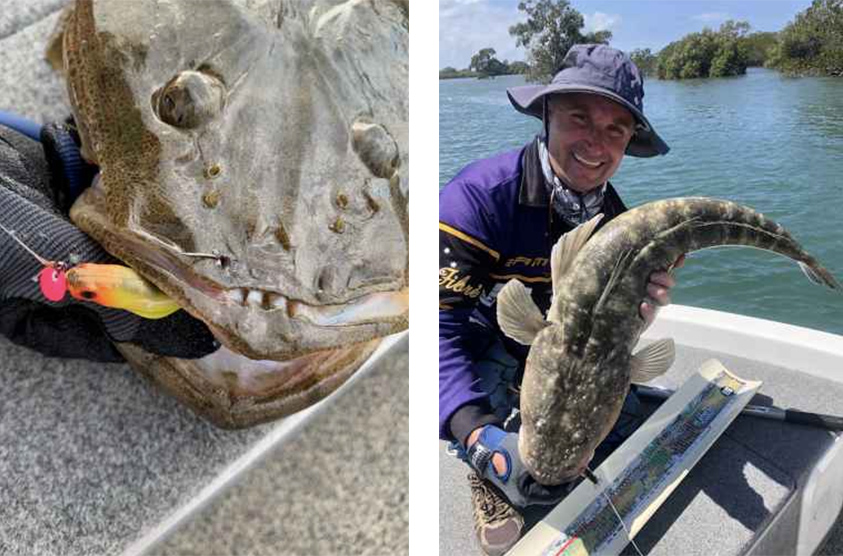
What baits should I use?
Live Bait - Live prawns, mullet, herring, hardyheads, and whitebait are some of the greatest baits you can use for flathead. If live bait isn’t available, then head to your local tackle store for a selection of fresh bait and to ask the staff what they would recommend in the area you are planning to fish. Remember local knowledge is key!
Getting to know your local tackle shop staff is a great way to get the best advice in your part of town. When targeting flathead with bait, simple rigs are best. A running sinker above a small swivel, 30cm of leader and a hook is perfect for presenting a natural looking bait close to the bottom where the flathead live.
Soft Plastics - If you are planning on targeting flathead on artificials, soft plastics are a great place to start. It’s a good idea to carry a few packets of both fish profile style lures like Z-Man Minnowz, Molix RA Shads and creature type baits like the Zerek Shrimp and Live Target Fleeing Shrimp so you can cover your bases when you are out on the water or walking the bank.
Matching your plastic to the right size and weight jig head is also important. Your jighead needs to be heavy enough to stay in contact with the bottom, but shouldn’t be so heavy that your soft plastic loses its natural action.
Experiment with different jigheads and you will quickly find out what works in your area. When it comes to retrieves you can keep things pretty simple. Slowly rolling your soft plastic just above the bottom can be deadly for flathead, you can also incorporate short sharp rips to hop your lure up off the bottom. The small puffs of sand and mud that are generated with this hopping technique, is a great way to grab the attention of any resident flathead. Vary your retrieve and you will soon found out what is working on the day.
Hardbodies - Hardbody lures can also be dynamite, especially if the flathead in your system are feeding aggressively. Suspending jerkbaits like Jackall Bros Squirrel 61sp and Zerek Tango Shad 50mm are perfect for fishing the edges of drop offs and flats.
Slowly rolling these lures back to your feet or the boat can work well, but you can often fire up dormant flathead with short sharp twitches of your rod followed by a couple of seconds pause. Flathead will often follow your lure for some time before attacking it and a perfectly suspending lure paused in their face is very hard to resist.
Again, play around with your retrieves and see what works on the day. Sometimes a really long pause is needed to trigger a strike, other times a more aggressive constant twitch will be needed to get the desired result.
Another lure that technically fits in the hardbody category (although it is a true creature bait) and is absolute dynamite on flathead is the Cranka Crab from Cranka Lures. Although these lures are best known for their big bream catching prowess, they are a fantastic option for flathead! Cast them out along drop offs or the flats on an incoming tide and slowly drag, hop or shake them back to your feet and flathead are sure to find them irresistible!
Conclusion
This article should give you a great starting point to jump in and effectively target these predatory fish in your local systems. We should also add that there are some absolute gun anglers out there targeting flathead to great effect on big swimbaits, oversized plastics, fly and surface lures but we will have to cover those more advanced techniques in another article. If you want to learn more about any of the techniques mentioned in this article, drop in and ask the team at The Tackle Warehouse and we will be happy to help you.
Remember, if you are planning on taking home a feed of flathead check the min/max size and bag limits in your area. Return any fish you aren’t taking home as quickly as you can to ensure a healthy population for years to come.

